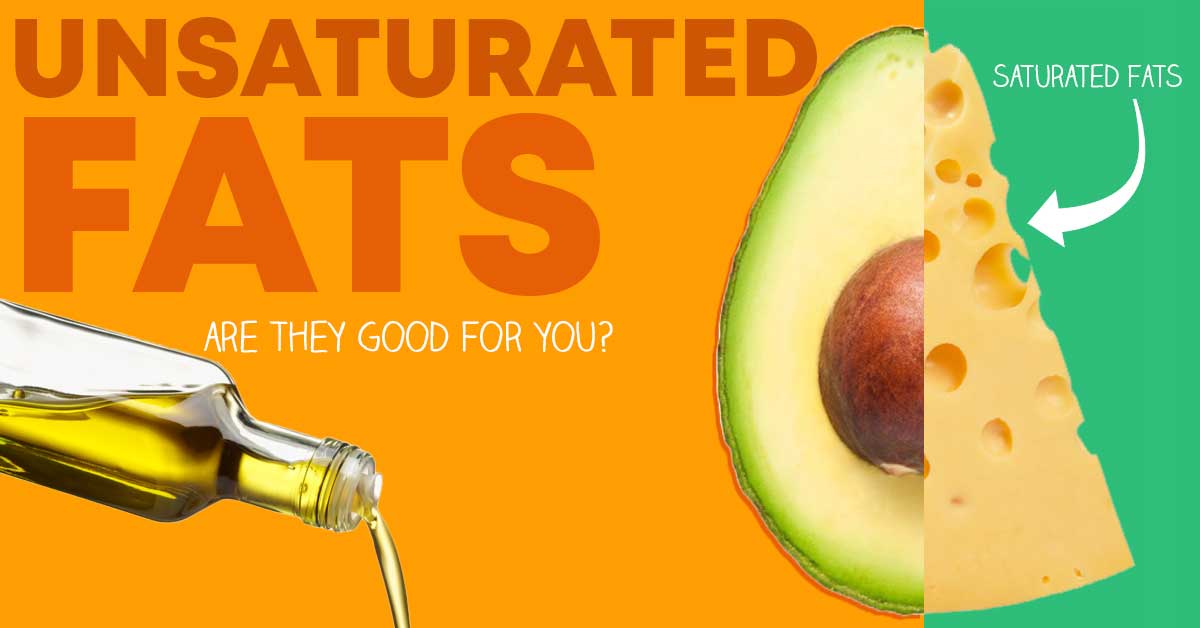It’s easy to read the word “fat” on a nutrition facts label and assume that it will be a hazard to our health. However, not all types of fat are as bad as you may think. In moderation, unsaturated fats are a part of a balanced diet.
What are Unsaturated Fats?
There are multiple types of unsaturated fats, including monounsaturated fats and polyunsaturated fat. These are most commonly found in nuts, seeds, and oils.
Most unsaturated fats are liquid at room temperature, which is why they are most commonly associated with oils in cooking – such as olive oil. However, they are prominently found in avocados, nuts, and seeds of numerous varieties (these foods obviously forgo the “liquid at room temperature” distinction).
Monounsaturated fats have been connected to a decreased risk for cardiovascular disease, while polyunsaturated fats are crucial to proper body function – like muscle movement and blood clotting.
Arguably the monounsaturated fat with the most “buzz” is omega 3 fatty acids.
Omega 6 fatty acids are another in this category, but most Americans already eat plenty of these because they are found in canola oil, walnut oil, corn oil, and more common oils. Omega 6 is known to cause inflammation, so you have to exercise caution to not eat too much.
What are the Benefits of Unsaturated Fats?
Unsaturated fats get their name from their lack of at least two hydrogen atoms in their molecular makeup. These missing atoms make unsaturated fats easier to break down, and as a result less likely to create blockages in your arteries.
Before we describe the benefits of this healthy type of fat, it is worth noting that you should not lean heavily into them as a part of your diet. The American Heart Association still recommends that less than 25% of all of your calories come from any kind of fat.
The good news is a healthy amount of unsaturated fats can play a role in lowering your bad cholesterol levels while at the same time aiding your cells and brain health. The Mayo Clinic points out that this is often largely the case because a substitution has taken place. You replace saturated fats with unsaturated fat options, resulting in benefits arguably from the unsaturated fat, but also because an unhealthy fat was removed from your diet.
What are Saturated Fats and Trans fats?
These are the ones that give all fats a bad reputation. Saturated fats are found in fatty pieces of meat, particularly processed meats.
The American Heart Association recommends keeping your saturated fat below 6% of your daily calorie intake (for a 2000 calorie diet, this is about 12 grams). This is important because saturated fats raise LDL cholesterol levels in your blood. Those that monitor their cholesterol levels already know this increases the risk of heart disease and stroke.
The most common form of saturated fats you encounter in processed foods is trans fat. These can occur naturally, but most are artificially made as they are placed in processed foods to extend their shelf life.
By consuming trans fats you experience an increase in LDL cholesterol without any positive increase in “good” cholesterol (your HDL). Overall, this means trans fats likely increase your risk of heart disease.
What’s the Verdict?
The American Heart Association has a great article on each type of fat and its overall role in your diet.
To summarize the American Heart Association:
Saturated Fat: 6% or less of your total daily calories (about 12 grams for a 2000 calorie diet)
Trans Fat: As minimal as possible, if not outright eliminate if you need to lower your LDL cholesterol
Unsaturated Fats: While these are the “healthier” options, maintain that no more than 25% of your daily calories are fat. That includes Saturated fats, so a safe estimate may be to maintain about 19% or less of your daily calories from unsaturated fats.


